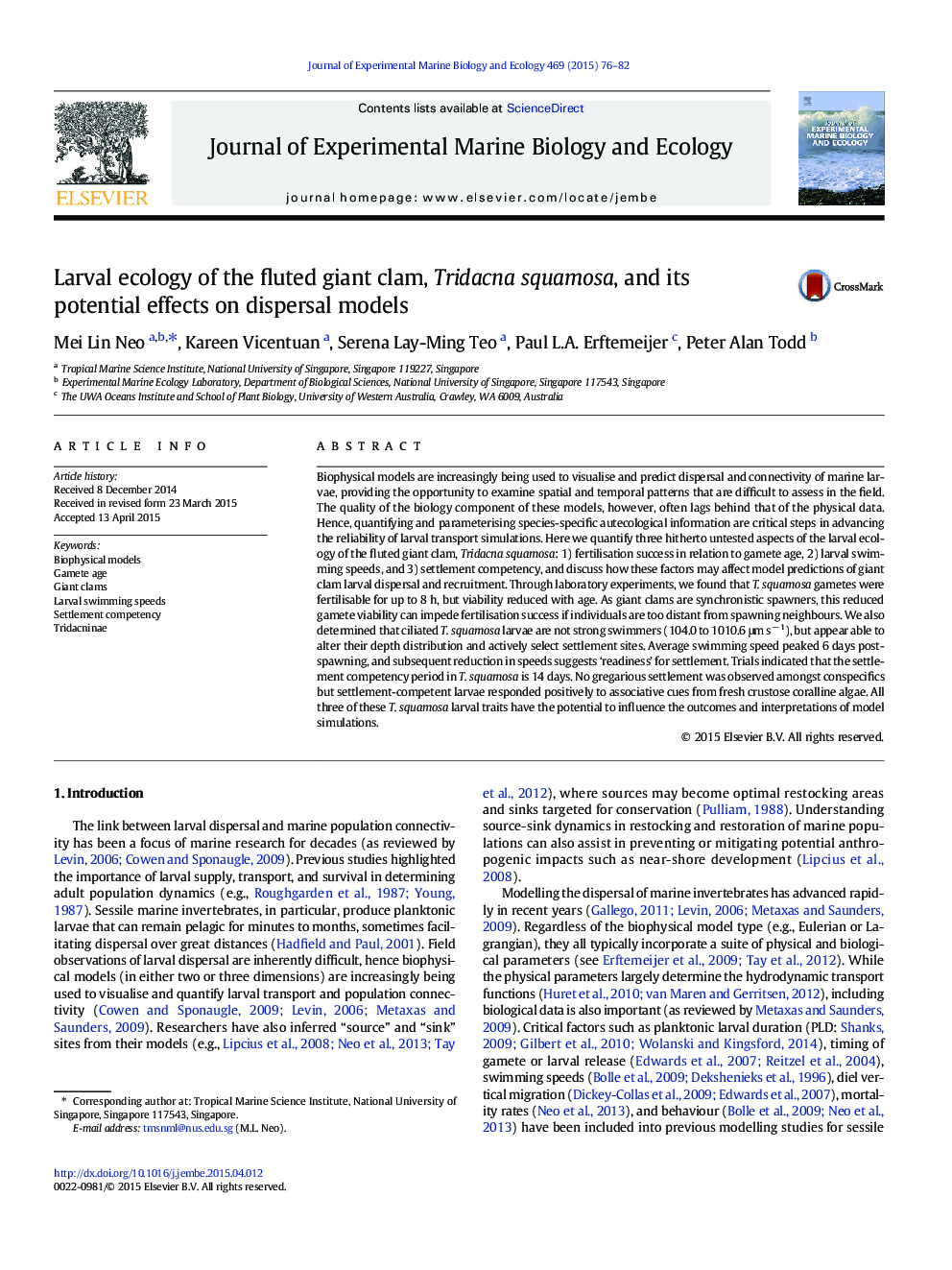| Article ID | Journal | Published Year | Pages | File Type |
|---|---|---|---|---|
| 4395421 | Journal of Experimental Marine Biology and Ecology | 2015 | 7 Pages |
•We experimentally quantify three hitherto untested aspects of the larval ecology of fluted giant clams, Tridacna squamosa.•We discuss how these factors might affect model predictions of giant clam larval dispersal and recruitment.•All three larval traits have the potential to influence the outcomes and interpretations of model simulations.•Results can be incorporated into biophysical models to help define critical population size for restocking giant clams.
Biophysical models are increasingly being used to visualise and predict dispersal and connectivity of marine larvae, providing the opportunity to examine spatial and temporal patterns that are difficult to assess in the field. The quality of the biology component of these models, however, often lags behind that of the physical data. Hence, quantifying and parameterising species-specific autecological information are critical steps in advancing the reliability of larval transport simulations. Here we quantify three hitherto untested aspects of the larval ecology of the fluted giant clam, Tridacna squamosa: 1) fertilisation success in relation to gamete age, 2) larval swimming speeds, and 3) settlement competency, and discuss how these factors may affect model predictions of giant clam larval dispersal and recruitment. Through laboratory experiments, we found that T. squamosa gametes were fertilisable for up to 8 h, but viability reduced with age. As giant clams are synchronistic spawners, this reduced gamete viability can impede fertilisation success if individuals are too distant from spawning neighbours. We also determined that ciliated T. squamosa larvae are not strong swimmers (104.0 to 1010.6 μm s− 1), but appear able to alter their depth distribution and actively select settlement sites. Average swimming speed peaked 6 days post-spawning, and subsequent reduction in speeds suggests ‘readiness’ for settlement. Trials indicated that the settlement competency period in T. squamosa is 14 days. No gregarious settlement was observed amongst conspecifics but settlement-competent larvae responded positively to associative cues from fresh crustose coralline algae. All three of these T. squamosa larval traits have the potential to influence the outcomes and interpretations of model simulations.
